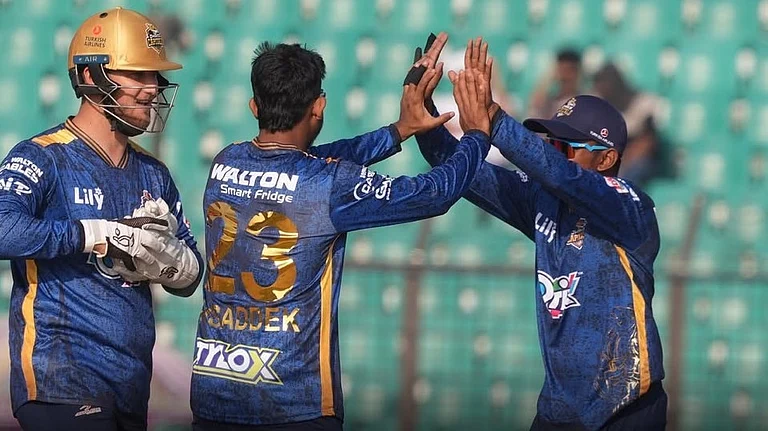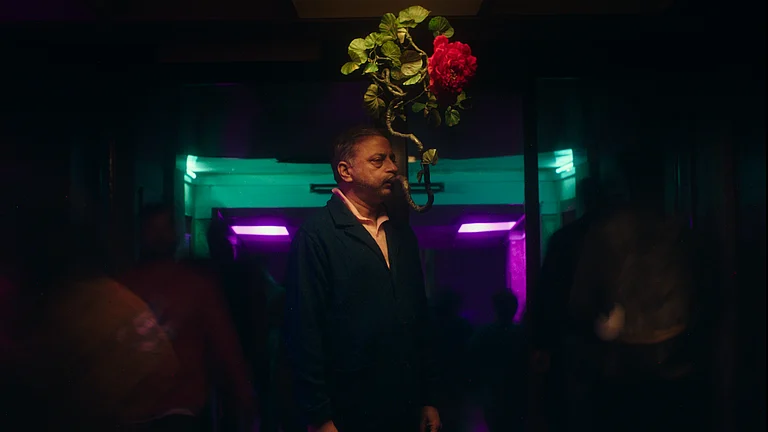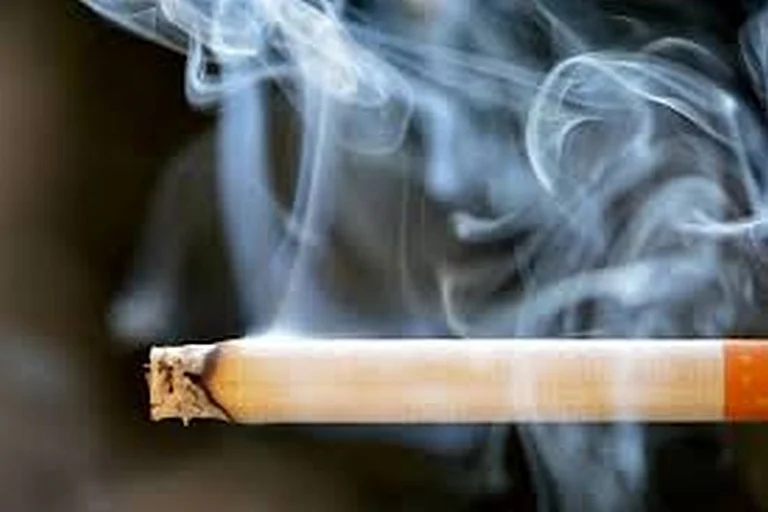It is lonely at the top. Its also very cold. Last week, while the temperature in Delhi hit a sweltering 42 degrees, the Indian soldier was still shivering in minus 15 degree cold on the snowclad mountains above Dras. The war may be over but the vigil continues. Post-Kargil, the army is in no mood to take any chances and the patrolling of the border is intensive. So, despite a severe winter - when temperatures dipped to minus 45 - the troops braved it out.
Says Maj Gen Mohinder Puri, GoC of the Kargil division: "This is the first winter troops have been deployed on the LoC. Earlier, this was only in selective places but now there is an increased deployment and this is more or less of a permanent nature." According to senior officers, the Pakistanis have also been active during the winter and have lined their troops and guns on their side of the LoC. These were heights that were largely left unmanned before last years infiltration by Pakistani troops.
It is now recognised that in terms of strategy, it is important to set up posts in the winter months along the LoC. Thats because once the snows melt, the guns will start booming again. In fact, even in the far-away Jammu division, villages along the Rajouri and Poonch sectors have already begun to hot up. "Siachen was always a hot area," says Maj Sonam Wangchuk of the Ladakh Scouts. And in the Batalik sector, there have been reports of fresh infiltrations as well. According to officers monitoring activity along the border, the winter is nearly over but it is going to be another difficult summer when the infiltrations can begin on a bigger scale.
Says Col George Newton, posted at an army post above Kargil: "Its open season now, for both of us." He then tempers his statement with a politically-correct note of caution: "It will, of course, take grave provocation for us to shoot first." He rules out the possibility of another Kargil since the army is on total vigil.
However, Maj Gen Puri is hesitant to give the Kargil-Dras sector a no-risk certificate. "In winter, it was difficult for either side to fire. Lets see what happens in the summer. It is unlikely that they (Pakistan) will risk another adventure. But I am not committing myself. We are prepared for any eventuality on the LoC."
Army officers are, meanwhile, amused at the politicians quibbling over how to classify last years war. Points out a senior officer: "Initially, we thought Kargil was an infiltration. It turned out to be an intrusion, and then the PM called it an aggression." That was last summer. This year, however, army officials claim that while the enemy will not undertake the same scale of operations as it did, there will be individual cases of intrusion on both sides.
Explains an army officer: "The LoC in this area is a jagged line. At some points, we have the advantage in terms of height and at others, the other side does. So, there will be attempts on both sides to use their height to score over the other." When asked if India would initiate this tactical warfare, he was a little hesitant: "Our soldiers are chafing to do something. But it all depends on Delhi," he said somewhat regretfully.
However, the general consensus is that Pakistan will limit itself to minor attacks along the border. "Their (the Pakistani armys) morale is very low after their defeat," says Col Newton. "There has been no big-scale firing since August last year." For Maj Satinder Kaushal, in charge of an army post at 14,000 feet above Dras, "Minor skirmishes along the LoC are a regular feature but after deployment of troops, it is not possible for them to try anything like Kargil again. "
Such categorical assurances aside, no one is taking any chances. However, there is a view within the army that rather than pushing the troops to face the biting cold and inhospitable mountain terrain during the winters, it would be better to leave the mountains unguarded and instead hold a strong reserve force to throw back any possible intruders. This view, though, is not shared by the majority. "Once the heights are taken by the enemy, it is very difficult to occupy them again. This is what happened in Siachen. Whoever has gained whichever post is holding on to it. One cant leave a sector unattended like that. We have paid for it once. It took four months to get it back," says an army officer based in Dras.
It is not the army alone which is set for a possible flare-up along the border once the snows melt. The civilian population is prepared as well. Each house that has been rebuilt after last summers war now has a bunker. The government has in fact provided for this in the compensation package. This is to ensure that civilians do not need to run away from their homes.
In addition, the much-shelled National Highway 1A, the lifeline which connects Dras to Kargil, now has signposts at all points vulnerable to enemy fire. The signposts carry a dire warning: Caution, you are now entering the firing zone. Once in the clear, another such sign will assure you, Relax. You are now safe. These are all part of the post-Kargil alert. During last years conflict, army personnel had to stand on guard in order to warn vehicles when they were entering these danger zones. As a note of caution, civilians were also asked to keep as far away from army vehicles as possible, while travelling. After all, there was a war going on out there.
A year later, not much has changed. There is a fragile sense of peace and while everyone assures you that there is little likelihood of another conflict breaking out, no one is willing to bet on it. Hence the mandatory bunkers, the signposts, the hurried construction of an alternate route connecting Dras to Kargil - a route that is outside the enemys range of fire.
It is an arduous and isolating existence, at heights that range from 12,000 to 18,000 feet. Although the jawans are allowed to go on leave three times a year, they have to first serve a minimum three-month stint in the mountains. And if there is an avalanche or heavy snowfall, then this can extend to as long as six to eight months. In the meantime, there is very little to do and no relief. Soldiers point out that since this is the first time the mountains have been manned in winter, the infrastructure is still shaky. The telephone lines are often down, leaving the soldier little option but to hear their letters read out to them over the wireless from the headquarters and to use the same impersonal channel to dictate a reply.
Far away from their homes and with no contact with the outside world, television does not seem a luxury but a necessity. However, not all posts have access to TV sets. And even if they do, the chances are that the generator to power it will not work. Which leaves playing cards and film magazines as the only diversion. Cut-outs of Sonali Bendre and Madhuri Dixit are pinned on the walls of the bunkers. The bathroom door on a post above Dras has a voluptuous picture of a naked woman sketched on it. "We discourage drinking, especially at night," says Maj Kaushal, "but to keep the men busy, there are regular duties that have to be carried out, like maintenance of weapons. And, of course, vigil throughout the night."
The peaks have been named to capture the imagination. The Indian soldier looks onto the enemy side and has to keep track of all movements on Nargis and Reshma. Col Newton tells a story about an army jawan calling his wife and telling her that he was busy ogling Nargis. However, the more politically savvy have named one enemy post Benazir and, in recent times, Pervez has been added to the list. In fact, at an army post above Dras, someone with a sense of humour has put up a placard facing the general direction of Pakistan, asking, "Phir kab aaoge? (when will you come again?")
In some areas, however, the enemy is barely a stones throw away. And at such places, it is not unnatural to strike a rapport with the soldier on the other side, despite the fact that this is generally discouraged. "Its a psychological warfare and we have to keep up the pressure on the other side at all times," says Maj Kaushal. He tells of an army post where the Indians have prevented the Pakistanis from easy access to a river within sniping range.
However, it is not always easy to stoke the fires of hatred. For instance, Post 43 is an Indian army post that is barely 100 metres from the Pakistanis Post 44. This is the only motorable track on the LoC in the sector and this is where the bodies were exchanged during the war. During Id this year, the Indian soldiers yelled out to the other side asking for idi, the money usually given by elders to their younger relatives. Promptly, a few coins were tossed over from across the border. During Holi, the Pakistanis asked for their share of the mithai. They were told that someone would have to come into the firing range and collect it. No Indian soldier was ready to risk it. And sadly enough, no Pakistani ventured forward either. All that was needed was some trust. But this is a scarce commodity along the LoC.
While one hears quaint stories like these, guarding the borders is serious business. While in retrospect the jawan as well as the officer recounts tales of last summers war, they are very clear that the job at hand is to ensure that Kargil is not repeated again. And that is a tough call.






















